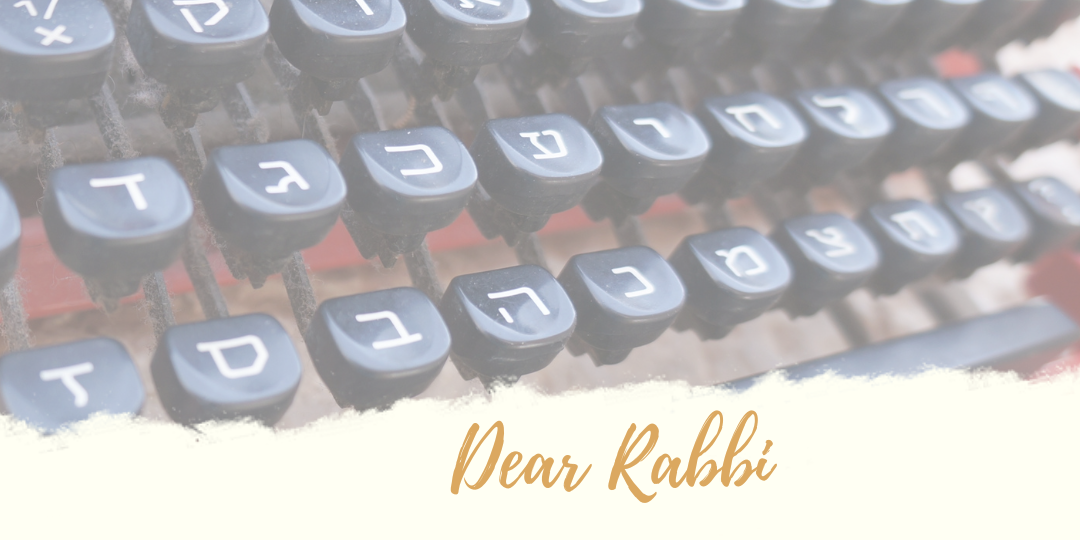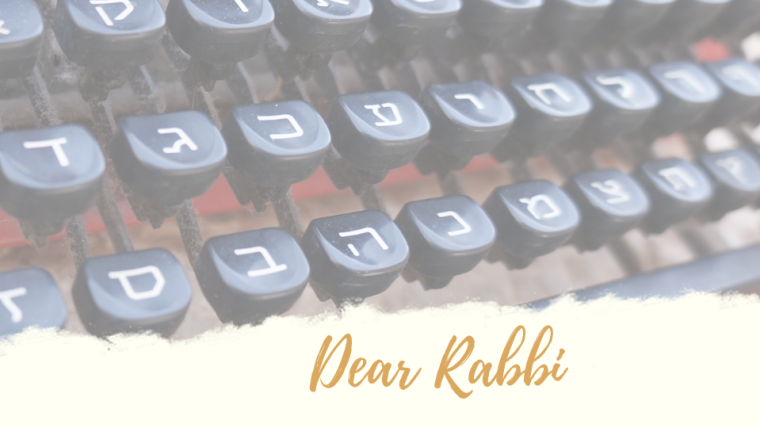Do you have a question for the rabbi? Write to Rabbi Ferro at rabbi@nhs-cba.org with the subject “Dear Rabbi…”
Dear Rabbi,
I’ve noticed that for “pandemic mode,” we’ve abbreviated our High Holiday services a bit. But there are still some pretty long parts we’ve kept in. How do you decide what to keep and what to take out? And how about the parts that get read in English?
-Wondering About Worship
Dear Wondering,
Thanks for noticing!
The shortest answers to your questions are: the longer the prayer has been a part of the service, the more likely we are to try to keep it in, in one form or another; and the prayers that we read in English are the ones we feel like reading in English to help people stay connected to what’s going on — as Jewish tradition explicitly tells us that prayers may be recited in Hebrew or in any language that the pray-er can understand.
However, there’s a bit more to say here, of course.
The key statutory prayers of our tradition are the Shema, with its blessings before and after, and the Amidah, the 19*, 9, or 7 blessings for Weekdays, Musaf on Rosh ha-Shanah, and all other special days, respectively.
(* – We actually have 20 blessings in the Fast Day liturgy when the prayer leader recites the full Amidah; but this is better for Jewish trivia than answering the question at hand here.)
The Shema is a twice-daily meditation and declaration of faith, and we give it its due by surrounding it with blessings. The Amidah is a replacement for the sacrifices of the Temple that we recite three times a day (four on Shabbat and most holidays, and five on Yom Kippur).
These two elements are both considered important ritual duties of every single Jew, and for this reason, we do not remove these from our prayer services.
Other items are largely optional, like Psalms (biblical poems) and piyyutim (post-biblical poems). In fact, the liturgical poetry of piyyutim runs throughout the Rosh ha-Shanah and Yom Kippur liturgy and is a big part of what makes it as large as it is. Some piyyutim are very traditional, dating back as many as a thousand years or more. But there are three competing tendencies in our tradition that can apply to our High Holiday services and the elements of prayer that we can consider optional:
- adding new obligations or customs to Jewish life and prayer without ever letting go of old ones;
- trying to practice a Judaism similar to one of the rabbis who lived during the Talmudic period; and
- not making ritual demands of people that they cannot actually meet.
When it comes to requiring the lengthy recitation of as many medieval poems as possible, we would certainly have a hard time balancing all three of these tendencies at once.
Lastly, though also very important, is the question of what really “moves” people. In most synagogues, people really appreciate hearing the Shema and the Amidah in Hebrew, even if they themselves do not understand it. I couldn’t possibly imagine not reading Kol Nidre with its traditional Aramaic text and the traditional melody; it wouldn’t feel like Yom Kippur for me without hearing these.
So when we make our decisions, all of these issues come into play. They help us decide what to shorten, what to retain, what to read in English, and what to read in Hebrew or Aramaic, but in reality, there’s no “secret recipe.” It’s mostly the same year to year (most years), but with small experiments scattered throughout. As we hear from you (and from everyone else) about your yearly experiences, we’re able to make some additional adjustments for the following year as well.



